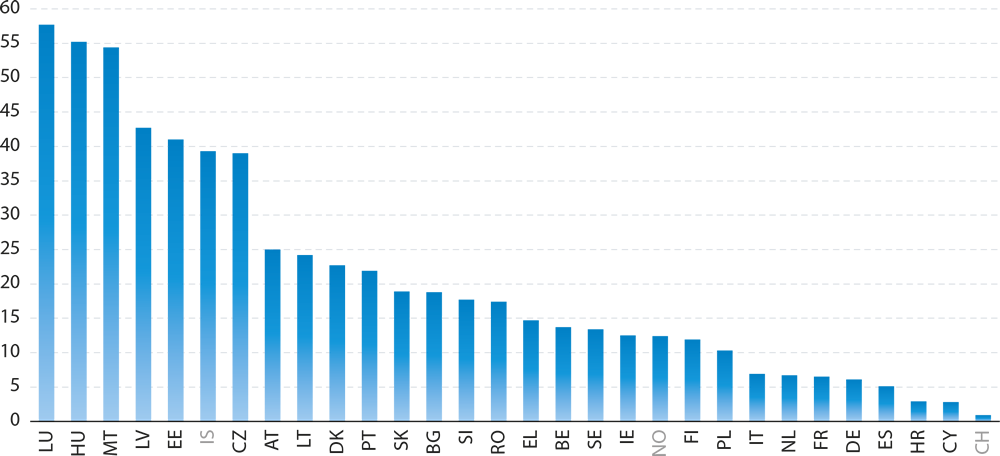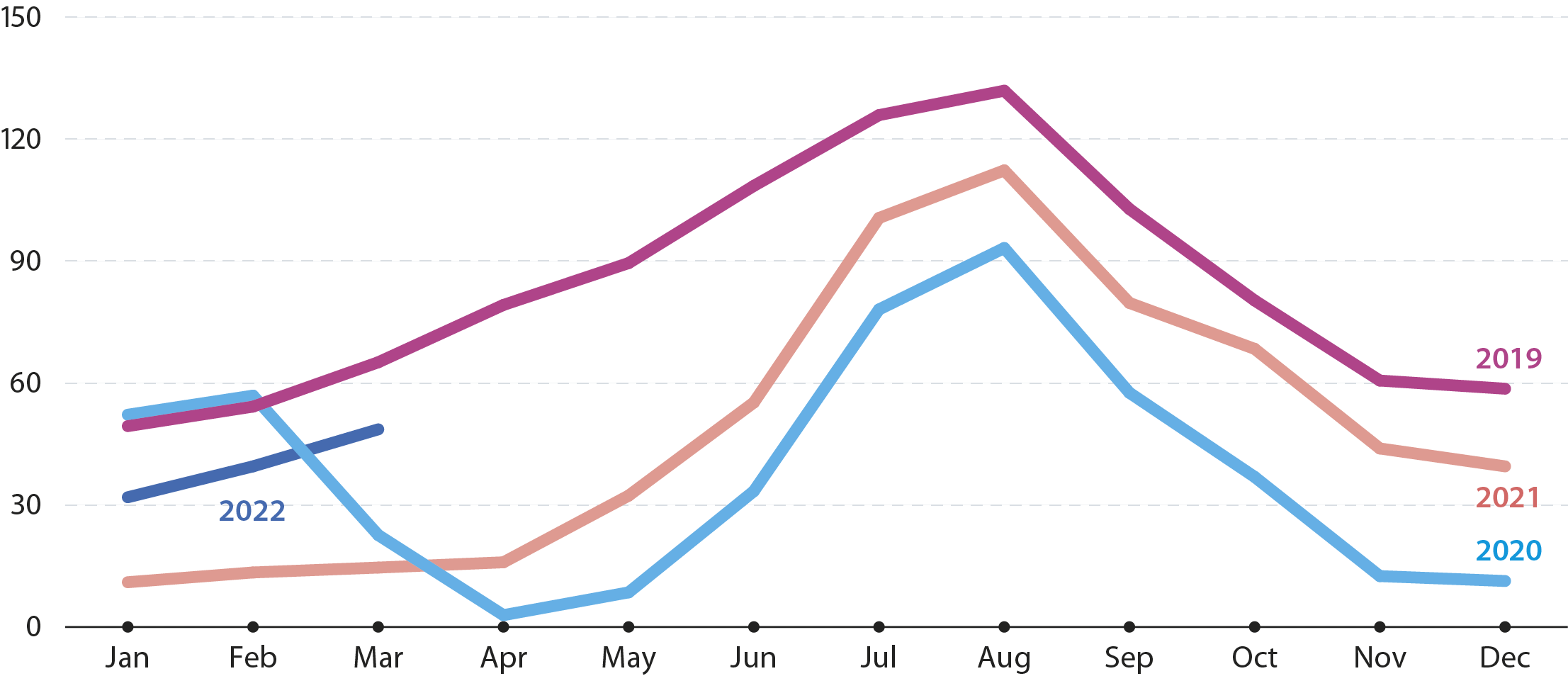Structure
Tourism is travel to a destination away from home for less than one year, for pleasure, business or other personal reason.

Source: Eurostat (online data codes: tour_occ_ninat and tour_occ_nim)

Source: Eurostat (online data code: tour_occ_ninat)
Between 2011 and 2019, the number of nights spent in tourist accommodation in the EU increased at an average rate of 3.1 % per year. This sustained period of growth was followed by a sharp contraction (down 50.5 %) in 2020 – as the COVID-19 crisis started – and a partial rebound (up 27.8 %) in 2021.
In 2021, 1.8 billion nights were spent in tourist accommodation in the 27 EU Member States. This overall figure includes nights spent by domestic tourists (those travelling within their country of residence) and inbound international tourists (coming from other Member States or from non-EU countries). The largest markets in the EU were France, Italy, Germany and Spain, each recording 259–324 million nights spent in tourist accommodation.
Capital city share of nights booked through booking platforms (%, 2021)
Data on short-stay accommodation rentals are available from Airbnb, Booking, Tripadvisor and Expedia Group. In 2021, 364 million guest nights were spent in the EU in holiday rentals booked through one of these four platforms, well below the 512 million total in 2019, before the onset of the COVID-19 crisis.
In 2021, more than half of the nights spent in accommodation booked through these platforms in Luxembourg, Hungary and Malta were in the capital city. By contrast, this share was below 10.0 % in some of the larger EU Member States (Italy, the Netherlands, France, Germany and Spain) and was just under 3.0 % in Croatia and Cyprus, reflecting the coastal domination of their tourism supply.

Source: Eurostat (experimental statistics)

Note: excluding IE, EL, CY, LU and SE; the data represent 91 % of the total nights spent in EU tourist accommodation.
Source: Eurostat (ad hoc voluntary data collection)
Domestic tourists accounted for more than two thirds (71.8 %) of nights spent in tourist accommodation across the EU (1) in 2020. Tourists from other EU Member States accounted for one fifth (20.4 %) of the total. As such, domestic and international tourists from within the EU accounted for 92.3 % of all nights spent in 2020, with international tourists from non-member countries constituting the remaining 7.7 %. Among the nights spent by tourists from non-member countries, by far the largest origin was the rest of Europe.
(1) These data for the EU are based on data for 22 EU Member States which, collectively, accounted for 91 % of the total nights spent in EU tourist accommodation.





